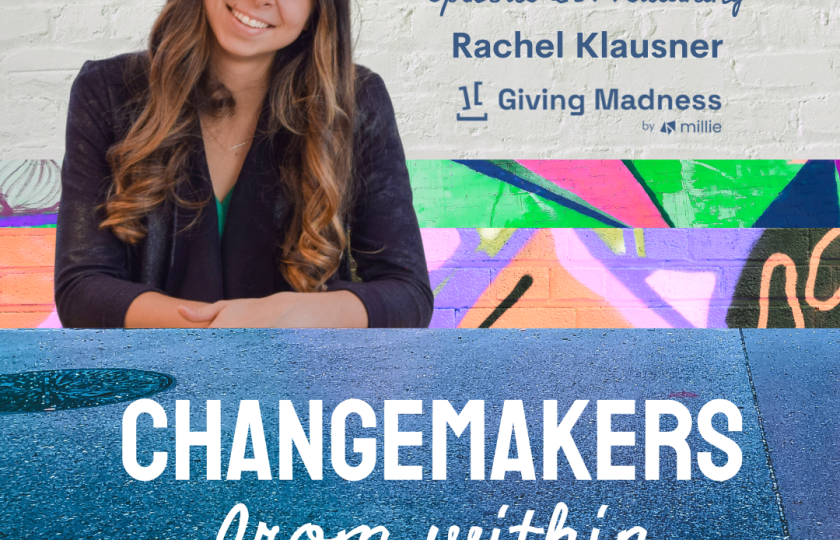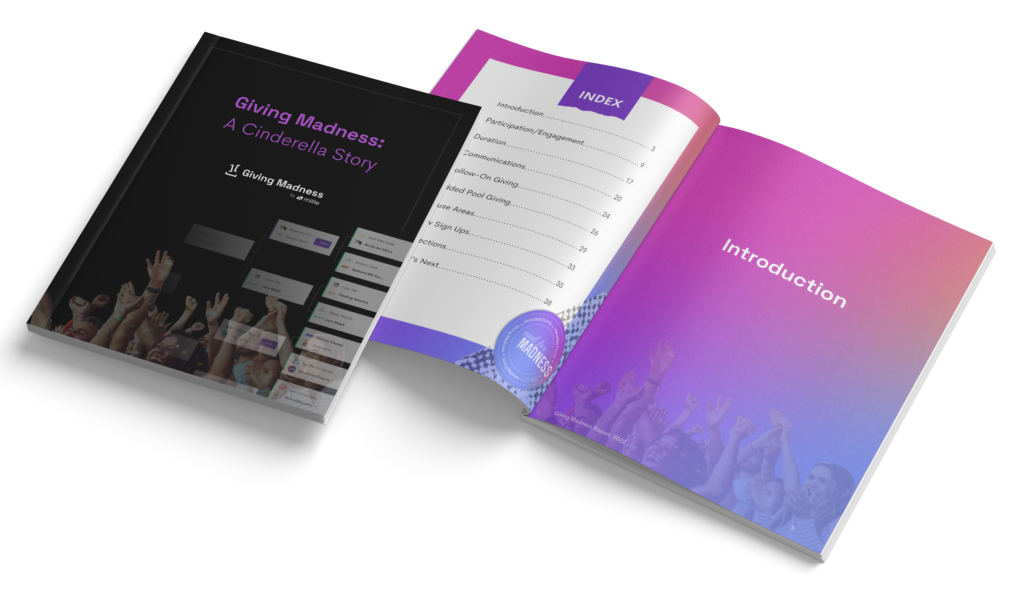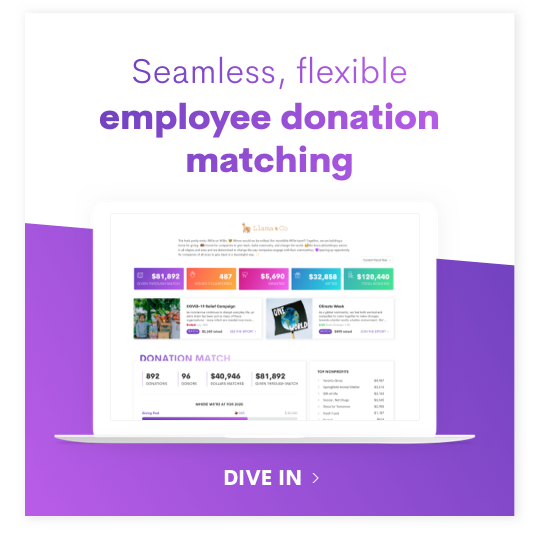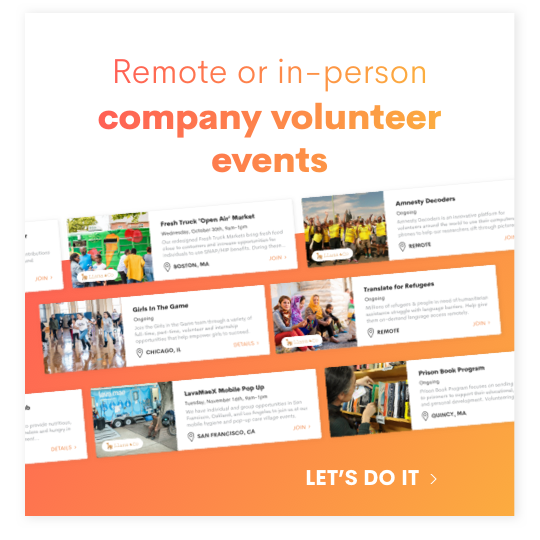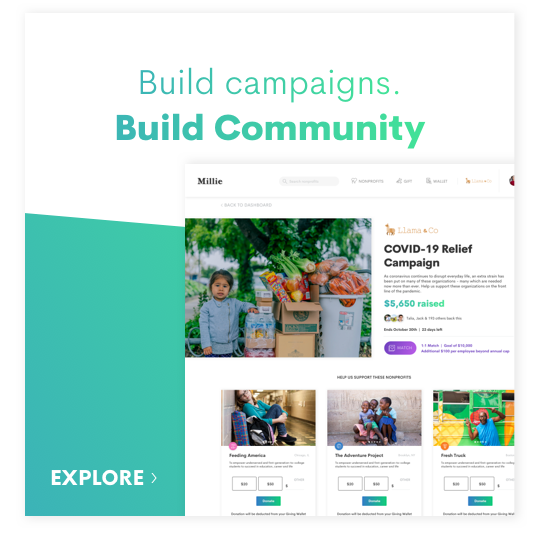Tune in for an all-exclusive Millie deep dive into all things Giving Madness with Founder, Rachel Klausner, interviewed by Millie team member, Stacy Schmitz. Rachel and Stacy answer the following questions:
- What is Giving Madness?
- How did it start?
What were the results of the pilot launch?
Listen to the episode here, or wherever you get your podcasts:
What is Giving Madness?
Giving Madness is a very cool gamified giving virtual event that spans over the course of a few hours, one week, or one month. Companies put money in a donation pool and choose 16 nonprofits to fill in the brackets. Employees are invited to participate by voting over the course of 4 rounds. It’s a great way to get more people involved in social impact in a low-pressure environment.
Where did it all begin?
Around 4 years ago, during March Madness and in the early stages of Millie, Rachel was having coffee chats with as many industry experts as possible. One day, Rachel was having coffee with Tim Smith from the Boston Foundation (now at Pledge 1%) chatting ideas. Rachel and Tim also had a shared obsession with March Madness, which led Tim into commenting that someone should build something around this with brackets. The two had such a great time brainstorming corporate philanthropy ideas and the March Madness idea left an impression on Rachel in a big way.
The Big “Why”
After the first year of success with the Millie donation match and volunteer software running smoothly, Rachel continued to notice the biggest demand in corporate giving…participation rates. Participation rates have always been undeniably low in corporate giving. Rachel’s next big goal at Millie was to move the participation rates needle forward in a big way.
This is why she loved the idea of Giving Madness: gamified giving software that was different and unique, with less commitment but more excitement. Giving Madness prompts users to read through nonprofit profiles before voting, which educates participants on the nonprofits and creates excitement.
How did the Bill & Melinda Gates Foundation get involved?
Rachel entered her idea into an open call for philanthropic ideas for a small grant through the Bill & Melinda Gates Foundation…which she didn’t get. About a year later, she received an email from the Gates foundation; an invite to a summer weeklong brainstorm session called a “collabs sprint.” It included people working in corporate giving as well as nonprofits.
Rachel was placed into a group that was categorized as gamified giving where she was able to really iron out the details of Giving Madness. Not long after the collabs sprint, she was personally invited to apply for a larger grant to bring this idea to life.
What a great reminder to never give up. Not to mention the lifelong friends and connections Rachel made along her journey with the Gates Foundation.💓
Giving Madness launched in spring of 2022. How did it go?
Rachel began this question by stating how grateful the Millie team is for all the companies who were willing to take a chance on this crazy journey with them.
Millie started their pilot launch with 9 participating companies. The main goal was to see higher participation rates than industry averages. Average corporate giving participation usually hovers around 10%. Giving Madness ended up with a 29% average participation rate. The team would have been excited about anything above 15-20% so they were very pleased with the results!
Giving Madness Fuels Advocacy
One of the neatest findings from a customer was that Giving Madness was an advocacy tool. He boasted that Giving Madness was an amazing excuse and reason for people to brag about amazing nonprofits they were passionate about. The competitive nature of Giving Madness fueled advocacy and opened doors to have meaningful conversations about nonprofits.
What were some of the other findings?
Millie recently released a full report on all the data from the Giving Madness launch. Here are a few more of the many findings:
Engagement
Engagement is described as how many times employees were voting across the 4 rounds. Rachel was nervous engagement was going to drop over time but actually saw the opposite. Engagement slightly increased as time went on.
A Communication Glitch
One customer switched a bracket that resulted in no email communication during the 2nd round. While that was an unfortunate glitch, the outlier was able to show that average engagement dropped 6% for that round.
Duration
What drove more engagement: one week or one month? The results were close but one week participation results were 4% higher.
What drove more participation: one week or one month? Participation rates for one week were 22% higher, perhaps due to the initial buzz of excitement.
What was your most surprising finding?
Duration was the most surprising. The team expected one month brackets to have higher participation and engagement because of the increased awareness over time.
Read the full report for more info about added pool giving, slack integrations, cause areas and sizes, new sign ups, follow-on giving and so much more. Check out the full report here:
What is the future for Giving Madness?
The vision for Giving Madness in 2023 is to integrate the software to make Giving Madness accessible for entire communities, including stakeholders, customers, and the general public. While Millie’s main audience is corporate giving, charitable gift cards have always been a very popular way to engage customers. And so next, companies can start offering Giving Madness to their customers which will be really neat!
This episode includes music by audionautix.com, released for use under a Creative Commons Attribution 4.0 International License.
